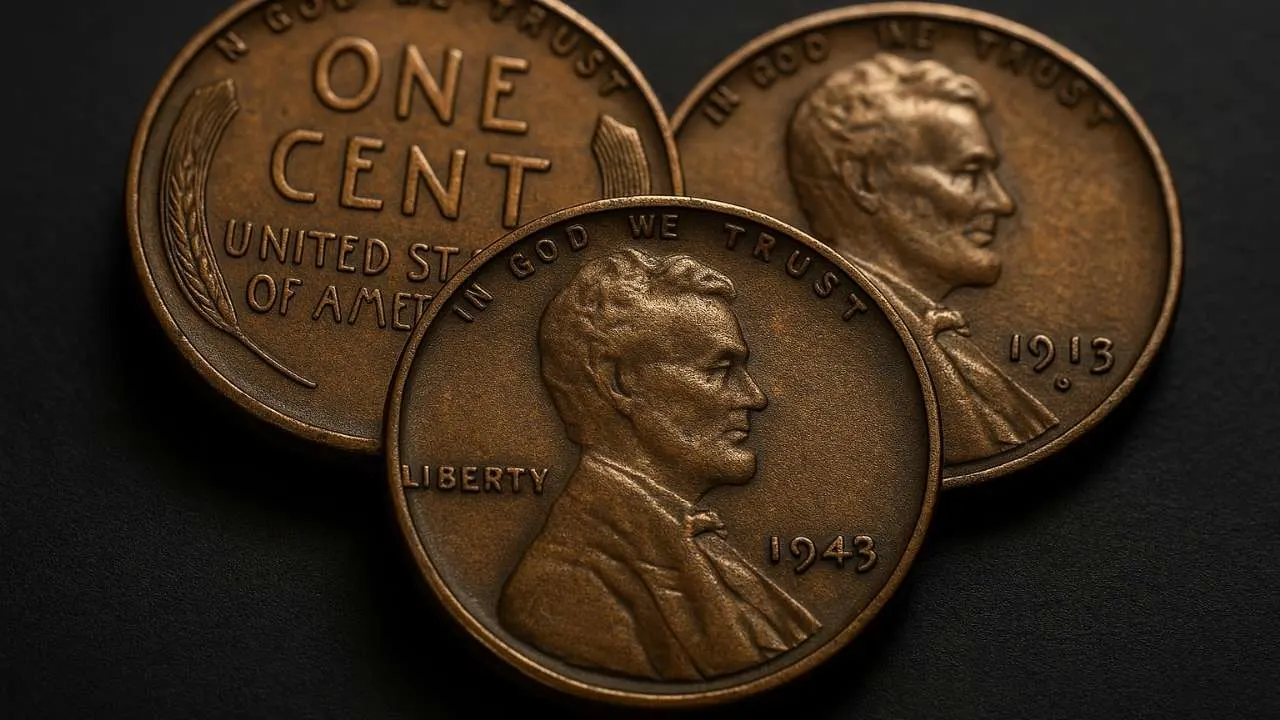Imagine picking up a penny so valuable it could change your life overnight. Sounds impossible, right? Yet, according to coin experts and collectors, a rare Lincoln Wheat Penny may be worth an astonishing $20 million, and it might still be sitting unnoticed in everyday circulation.
From forgotten piggy banks to old coin jars, this elusive penny could be hiding anywhere. Here’s what makes this coin so special—and how you can tell if you’ve got one.
“History has shown that some of the rarest coins in America end up in the most ordinary places,” says Robert Gaines, a senior numismatist at the American Coin Institute.
$20 Million Worth Lincoln Wheat Penny
The Lincoln Wheat Penny, often called the Wheat Cent, first appeared in 1909 to honor the 100th anniversary of Abraham Lincoln’s birth. Designed by Victor David Brenner, it was the first U.S. coin to feature a real person.
The obverse shows Lincoln’s profile, while the reverse features two wheat stalks framing the words “ONE CENT”—a design that remained in use until 1958.
| Feature | Details |
|---|---|
| Designer | Victor David Brenner |
| Years Minted | 1909–1958 |
| Composition | 95% copper, 5% tin & zinc |
| Diameter | 19.05 mm |
| Weight | 3.11 grams |
Although millions were produced, a few rare variations have achieved near-mythical status among collectors.
Why It’s Worth $20 Million?
So what makes a penny worth as much as a mansion? It all comes down to rarity, composition, and historical error.
The $20 million Lincoln Wheat Penny is believed to be an accidental minting anomaly—possibly a prototype or test strike that was never meant to leave the Mint.
One of the most famous examples of valuable minting errors is the 1943 copper penny. During World War II, the U.S. Mint switched to steel for pennies to conserve copper for wartime use. However, a few copper planchets were mistakenly used. These rare coins later sold for over $1.7 million each.
The rumored $20 million version is thought to be even rarer—potentially one of a kind.
“If a genuine prototype coin surfaces, it would instantly become one of the most valuable coins in American history,” says Nancy Edwards, curator of the National Numismatic Museum.
How it Could Still Be in Circulation?
What makes this story fascinating is that this ultra-rare coin could still be out there in everyday circulation. Unlike gold or silver pieces, pennies are often ignored, tossed aside, or left unexamined.
Think about it: how many times have you dumped change into a jar or dropped a few coins into a vending machine? Coins move through countless hands, stores, and cash registers every single day.
Some of the most valuable coin discoveries have come from ordinary people simply paying attention to the change they receive.
“Collectors have found six-figure coins in pocket change before—it happens more than you think,” says coin dealer James Wilcox.
What to Look For: Clues and Key Features
If you want to boost your odds of finding a fortune in your coin jar, here’s what to look out for:
| Feature | What to Check |
|---|---|
| Date and Mintmark | Rare dates like 1909-S VDB, 1914-D, and the 1943 copper penny |
| Magnet Test | Copper coins won’t stick to a magnet—steel ones will |
| Minting Errors | Double strikes, off-center prints, missing details |
| Material | Unusual color or heavier/lighter than normal pennies |
| Condition | Sharp details, luster, and little to no wear |
If you find a 1943 penny, try the magnet test. If it sticks, it’s steel and worth a cent. If it doesn’t—you may have struck gold (or copper).
What to Do If You Find a Rare Penny?
Think you’ve discovered the real deal? Here’s what to do next:
- Do not clean it. Even gentle cleaning can destroy the coin’s surface and dramatically reduce its value.
- Store it safely. Use a soft, airtight holder or coin flip to protect it.
- Get it appraised. Contact a certified coin grading service such as PCGS (Professional Coin Grading Service) or NGC (Numismatic Guaranty Company).
- Consult experts. Attend a coin show or visit a reputable dealer for authentication.
“The biggest mistake people make is cleaning a rare coin—they think they’re helping, but they’re actually lowering the value,” warns Tom Blake, a professional coin grader.
Famous Lincoln Penny Sales
To understand how valuable a single penny can become, here are some historic auction results:
| Year | Coin Type | Auction Price |
|---|---|---|
| 1943 Copper Penny | $1.7 million | |
| 1909-S VDB Penny | $117,500 | |
| 1914-D Wheat Penny | $75,000 | |
| 1922 No D Wheat Penny | $48,000 |
With the rumored $20 million Lincoln Wheat Penny, collectors are on high alert. Any discovery of a previously unknown variety could instantly rewrite numismatic history.
Why Pennies Matter to Collectors?
While many people overlook pennies as insignificant, coin enthusiasts see them as tiny pieces of art and history. Each variant tells a story about America’s economic and cultural evolution.
The Wheat Penny era (1909–1958) marked one of the most dynamic periods in American history—through two world wars, the Great Depression, and monumental social change. Collectors prize these coins for their nostalgia as much as for their potential value.
Could You Have One?
The odds are slim—but not impossible. Rare coins have surfaced in garage sales, attic boxes, and even school piggy banks. The key is to check every old penny carefully, especially those with the wheat stalks on the reverse.
Even if you don’t find the legendary $20 million penny, you might still uncover one worth hundreds—or even thousands—of dollars.
“Coins are time capsules,” says historian Dr. Evelyn Carter. “Each one carries a piece of American history, and occasionally, a piece of fortune.”
Conclusion: Don’t Overlook Spare Change
The Lincoln Wheat Penny is more than a coin—it’s a connection to America’s past and, possibly, your ticket to a life-changing discovery. Whether the rumored $20 million penny truly exists or not, keeping an eye out for unique coins is always worth the effort.
Next time you empty your pockets or count your change, take a closer look. You might just be holding a treasure worth more than you ever imagined.
FAQs
What is a Lincoln Wheat Penny?
A one-cent coin minted from 1909 to 1958 featuring Lincoln on the front and wheat stalks on the back.
Why is the 1943 copper penny rare?
It was mistakenly made from copper during WWII instead of steel, making it one of the rarest U.S. coins.
How can I tell if my penny is valuable?
Check the date, mintmark, weight, and metal composition. Rare varieties often look slightly different from normal coins.
Should I clean an old coin before appraisal?
No. Cleaning can scratch or alter the coin, reducing its collector value.
Where should I get my coins appraised?
Visit professional services like PCGS, NGC, or local coin shows for accurate evaluations.

